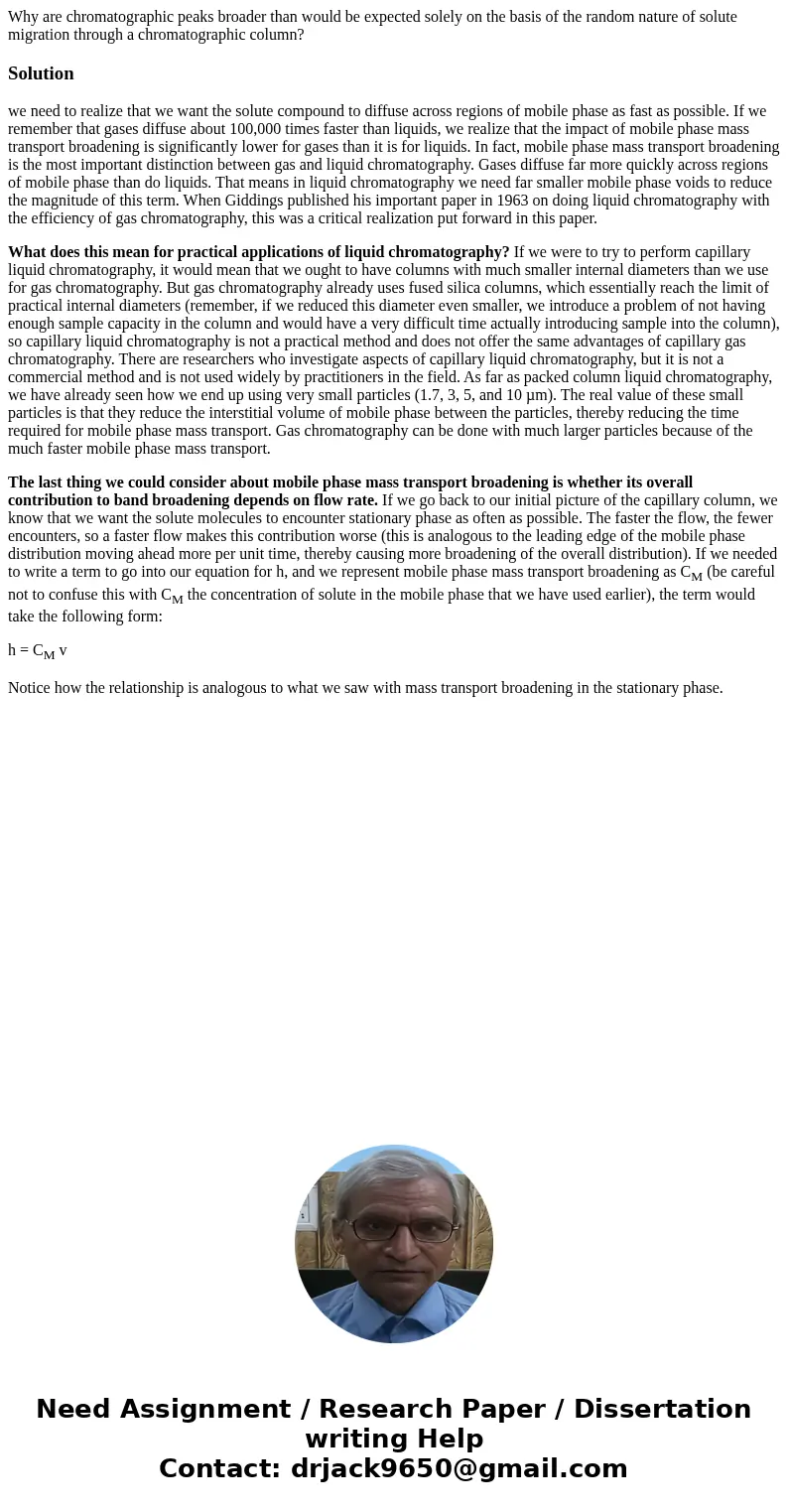Why are chromatographic peaks broader than would be expected
Why are chromatographic peaks broader than would be expected solely on the basis of the random nature of solute migration through a chromatographic column?
Solution
we need to realize that we want the solute compound to diffuse across regions of mobile phase as fast as possible. If we remember that gases diffuse about 100,000 times faster than liquids, we realize that the impact of mobile phase mass transport broadening is significantly lower for gases than it is for liquids. In fact, mobile phase mass transport broadening is the most important distinction between gas and liquid chromatography. Gases diffuse far more quickly across regions of mobile phase than do liquids. That means in liquid chromatography we need far smaller mobile phase voids to reduce the magnitude of this term. When Giddings published his important paper in 1963 on doing liquid chromatography with the efficiency of gas chromatography, this was a critical realization put forward in this paper.
What does this mean for practical applications of liquid chromatography? If we were to try to perform capillary liquid chromatography, it would mean that we ought to have columns with much smaller internal diameters than we use for gas chromatography. But gas chromatography already uses fused silica columns, which essentially reach the limit of practical internal diameters (remember, if we reduced this diameter even smaller, we introduce a problem of not having enough sample capacity in the column and would have a very difficult time actually introducing sample into the column), so capillary liquid chromatography is not a practical method and does not offer the same advantages of capillary gas chromatography. There are researchers who investigate aspects of capillary liquid chromatography, but it is not a commercial method and is not used widely by practitioners in the field. As far as packed column liquid chromatography, we have already seen how we end up using very small particles (1.7, 3, 5, and 10 µm). The real value of these small particles is that they reduce the interstitial volume of mobile phase between the particles, thereby reducing the time required for mobile phase mass transport. Gas chromatography can be done with much larger particles because of the much faster mobile phase mass transport.
The last thing we could consider about mobile phase mass transport broadening is whether its overall contribution to band broadening depends on flow rate. If we go back to our initial picture of the capillary column, we know that we want the solute molecules to encounter stationary phase as often as possible. The faster the flow, the fewer encounters, so a faster flow makes this contribution worse (this is analogous to the leading edge of the mobile phase distribution moving ahead more per unit time, thereby causing more broadening of the overall distribution). If we needed to write a term to go into our equation for h, and we represent mobile phase mass transport broadening as CM (be careful not to confuse this with CM the concentration of solute in the mobile phase that we have used earlier), the term would take the following form:
h = CM v
Notice how the relationship is analogous to what we saw with mass transport broadening in the stationary phase.

 Homework Sourse
Homework Sourse